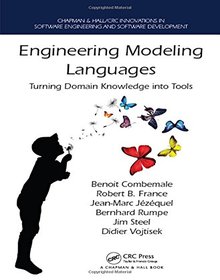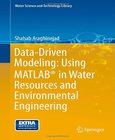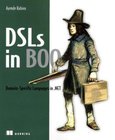Engineering Modeling Languages
Turning Domain Knowledge into Tools

Book Details:
| Publisher: | Chapman and Hall/CRC |
| Series: | CRC Press |
| Author: | Benoit Combemale |
| Edition: | 1 |
| ISBN-10: | 1466583738 |
| ISBN-13: | 9781466583733 |
| Pages: | 402 |
| Published: | Jan 31 2017 |
| Posted: | May 07 2017 |
| Language: | English |
| Book format: | |
| Book size: | 20.94 MB |
Book Description:
Written by foremost experts in the field, Engineering Modeling Languages provides end-to-end coverage of the engineering of modeling languages to turn domain knowledge into tools. The book provides a definition of different kinds of modeling languages, their instrumentation with tools such as editors, interpreters and generators, the integration of multiple modeling languages to achieve a system view, and the validation of both models and tools. Industrial case studies, across a range of application domains, are included to attest to the benefits offered by the different techniques. The book also includes a variety of simple worked examples that introduce the techniques to the novice user. The book is structured in two main parts. The first part is organized around a flow that introduces readers to Model Driven Engineering (MDE) concepts and technologies in a pragmatic manner. It starts with definitions of modeling and MDE, and then moves into a deeper discussion of how to express the knowledge of particular domains using modeling languages to ease the development of systems in the domains. The second part of the book presents examples of applications of the model-driven approach to different types of software systems. In addition to illustrating the unification power of models in different software domains, this part demonstrates applicability from different starting points (language, business knowledge, standard, etc.) and focuses on different software engineering activities such as Requirement Engineering, Analysis, Design, Implementation, and VV. Each chapter concludes with a small set of exercises to help the reader reflect on what was learned or to dig further into the examples. Many examples of models and code snippets are presented throughout the book, and a supplemental website features all of the models and programs (and their associated tooling) discussed in the book.
Download Link:
Related Books:
Data-Driven Modeling
Using MATLAB in Water Resources and Environmental Engineering
Data-Driven Modeling: Using MATLAB in Water Resources and Environmental Engineering provides a systematic account of major concepts and methodologies for data-driven models and presents a unified framework that makes the subject more accessible to and applicable for researchers and practitioners. It integrates important theories and applications of data-driven models and uses them to deal with a wide range of problems in the field of water resources and environmental engineering such as hydrological forecasting, flood analysis, water quality monitoring, regionalizing climatic data, and general function approximation. The book presentsthe statistical-based models including basic statistical analysis, nonparametric and logistic regression methods, time...
DSLs in Boo
Domain Specific Languages in .NET
A general-purpose language like C# is designed to handle all programming tasks. By contrast, the structure and syntax of a Domain-Specific Language are designed to match a particular applications area. A DSL is designed for readability and easy programming of repeating problems. Using the innovative Boo language, it's a breeze to create a DSL for your application domain that works on .NET and does not sacrifice performance.DSLs in Boo shows you how to design, extend, and evolve DSLs for .NET by focusing on approaches and patterns. You learn to define an app in terms that match the domain, and to use Boo to build DSLs that generate efficient executables. And you won't deal with the awkward XML-laden syntax many DSLs require. The book concentrates on w...
2007 - 2021 © eBooks-IT.org



